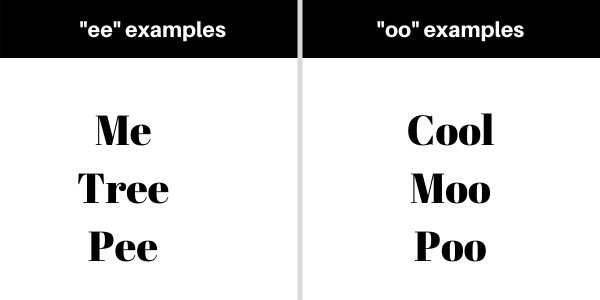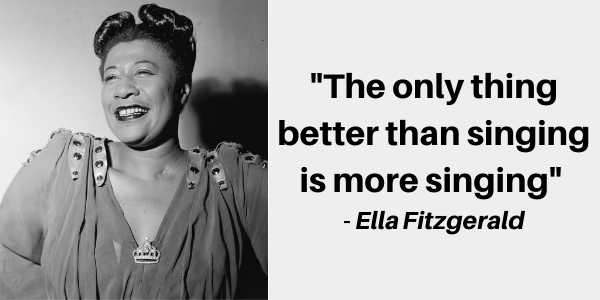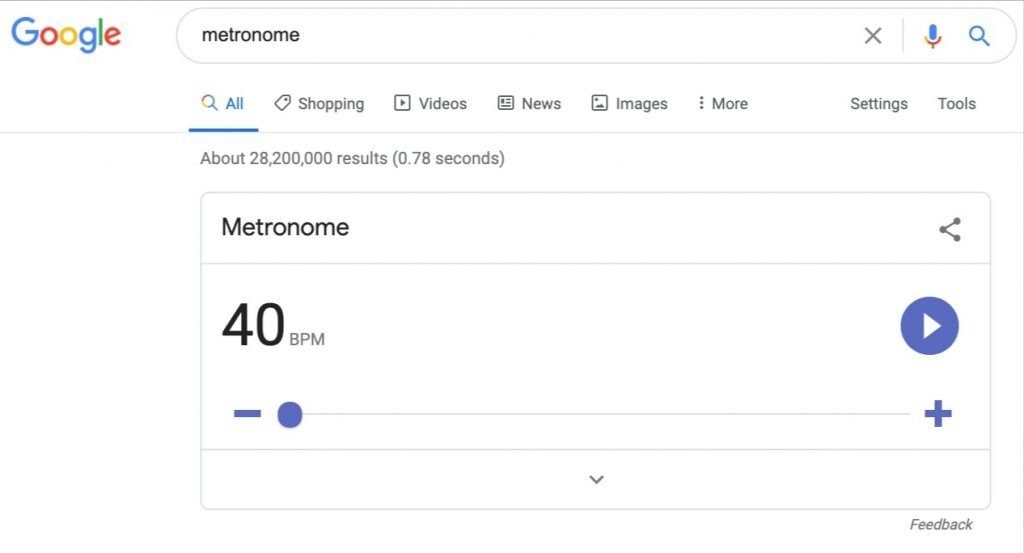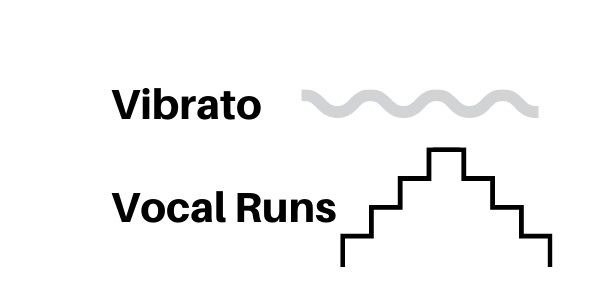Learning how to sing falsetto well is a challenge for many singers.
What usually happens for a beginner is you hear your favorite artists belting your favorite song in falsetto and when you try to imitate…
…You sound like a crackling donkey (…Or at least that’s how I was…)
That’s why I created this guide, so that you can learn efficiently with a proven system to make your falsetto better.
This system will help you learn how to increase its range, power, and control if you diligently practice your falsetto with this system every day and it’s something even advanced singers can benefit from.
So let’s get started.
______
Can You Learn To Sing Falsetto?

Here’s my answer to that question: If you can speak, then you can learn how to sing falsetto.
Now, the reason it might seem you can’t sing falsetto is because you most likely haven’t been using your falsetto.
Think about it.
We go about our days fine without using our falsetto and mainly talk to our friends and family in our regular chest voice.
So that means when we finally attempt to sing with falsetto, it’s going to be weak and crackly.
This is because it is a completely different vocal register we don’t use often and you have not developed it yet.
The best part is you can learn how to sing falsetto, even if you can’t hold a single note.
My falsetto range went from two crackly notes to almost 2 octaves within a couple years.
So yes, it is possible to train your falsetto even if you can’t use it yet. And if you continue to train your voice you can develop even cool effects like distortion or singing with emotion.
So now let’s get started on improving your falsetto voice.
______
1. Make A Falsetto Sound With An Easy Closed Vowel

Before you can learn how to sing in falsetto, you need to first learn how to make a sound in falsetto.
Here’s how you can tell if you’re singing in falsetto: Place your hands on your chest and you will feel no vibrations in your chest when you are singing a note.
Here’s how to tell which voice you are singing in:
- Chest voice: There’re vibrations in your lower chest.
- Head voice: There’re vibrations in your upper chest (It’s a mix between falsetto and chest…)
- Falsetto: There’re no vibrations in your chest (and can even feel a little pressure in your head..).
So place your hand on the middle of your chest and try to talk like Mickey Mouse or like a ghost being spooky with the words “woo…” (Or even that red lobster HIM, from Powerpuff Girls, if you know what I’m talking about…)
Your falsetto voice should have that airy, breathy quality when you are trying to make that falsetto noise.
If you are just starting out, then there might be no sound or even just crackles coming out which is perfectly normal.
We all have to start somewhere.
Now, what you want to focus on is using a closed vowel shape like “ooo” or “eee” with proper breath support to make it easier for the sound to come out.
This is because when you voice these vowels, your throat closes, making it easier for your vocal cords to not break apart (and make no sound…)
That’s why in the beginning, you want to avoid vowels like “ah,” “eh,” and “uh.” (Words like Apple, Yeah, and Mom.)
Your only goal right now is to make that falsetto sound without breaking.
Don’t worry about being on pitch or singing along with your favorite song since we have to build a solid foundation first.
You want to practice doing this for around 5-10 minutes every day just to build up your vocal strength in this new register since it’s going to be very tiring.
I remember I could only last for 2-3 minutes before I felt my throat extremely exhausted, even though I can sing in my regular chest voice for up to an hour.
So keep practicing, and focus on building your vocal stamina with proper technique and resting when your voice needs it.
______
2. Find Your Vocal Range In Falsetto

Learning your vocal range is extremely helpful when you want to learn how to sing falsetto.
Here’s why:
- You know your starting point…
- And you can track your progress over time to see how you improved…
And the second point is incredibly important because increasing your falsetto is freaking slow.
When I first started falsetto, I could only hit 2 crackly notes.
Like, it didn’t sound nice, and I also thought I couldn’t learn falsetto.
But after a couple of years of working on and now, I could visually see how much my falsetto progressed just by seeing where my vocal range was now.
But I’m not sharing that just to low-key brag (even though I am proud of myself…) but to highlight it’s possible to improve your falsetto with the right system and technique.
So here’s how you find your vocal range in falsetto: grab a vocal pitch monitor online and a piano and find the keys you can sing on pitch.
It may take you a bit of time if you haven’t developed your ear yet, but your vocal pitch monitor should tell you what note you are singing in falsetto.
If not, then you manually have to get a piano and try to match its pitch by ear (which may be difficult for beginners.)
Now, go as low and high with your voice record the notes you could hit.
This is important because you want to look back in a month and see how far you have actually progressed.
Now that you know where your starting point is, it’s time to make your falsetto sound fantastic.
______
3. Start Working On Your Pitch In Falsetto

This is where you learn how to go from “Snap, Crackle, and Pop” falsetto to decent falsetto.
Learning how to sing on pitch is king.
Which also includes your falsetto.
So how do you know you are singing on pitch in falsetto?
There’s three ways:
- Have a vocal teacher…
- Have a trained ear…
- Or use a vocal pitch analyzer.
I highly recommend option 3 if you are a total beginner because your ear probably has not been trained yet.
Now you want to learn how to stay on pitch with falsetto.
This is how we go from making sounds to actually sounding great with falsetto.
The way to do this is to get out your vocal pitch analyzer and try to hold a note comfortably.
This means that the line should be as steady as possible when you’re singing in your falsetto.
If you’re new to falsetto, it should be really shaky since and you might have difficulty just staying on pitch which is fine.
If you’re an advanced singer, make sure you aren’t flat or sharp and stay right there.
Now try to hit each note that’s above and below that key.
If you can’t… take a break and try again.
This is important before we can even do vocal exercises because we are developing your ear and falsetto to make sure it’s hitting the right notes.
When you can start hitting these pretty consistently, then we can start working on scales.
This is the next step because the foundation for doing your scales properly is being able to hit each note perfectly before we move on to switching notes (Hence, the scale.)
______
4. Start Increasing The Intensity Of Your Falsetto

Now it is time to increase the intensity of your falsetto.
When you are learning how to sing falsetto, you do not want to be all squeaky and crackly when you sing falsetto.
You want to reach those high notes easily and with confidence.
So this is how you increase the intensity of your falsetto: Hold a note cleanly and try to add more power through your diaphragm.
What we are controlling is the vocal dynamics and using proper breath technique so that you don’t strain your voice.
You should not feel any strain in your throat and you should push out more air to get more power in your falsetto.
It might be crackly sincere you may not have developed the vocal strength to handle the volume which is okay.
Now, try to do the opposite and try to make your falsetto as quiet as possible while being on pitch.
What we are doing is controlling the volume in your falsetto, which will also translate to improving your control in your regular voice.
This will allow you to become more adaptable to different songs if you can control the intensity of your falsetto without cracking.
Once you could do that with one note, try experimenting above and below that note and see how your voice holds up.
- Are there certain notes you are struggling with?
- Are there certain notes that you just can’t seem to add volume?
- Is it hard to decrease the volume when you reach your low falsetto?
Note it down and slowly start improving from there.
It’s all about measuring your progress and improvement.
______
5. Blend Your Falsetto And Chest Voice

The next step in learning how to sing falsetto and mastering your voice is learning how to blend your chest and falsetto voice together.
Here’s an example of John Legend singing “All of Me” where he blends his voice below (at 1:30)…
Now that’s the goal of blending your voice seamlessly.
Now, let’s take this example and the part where he switched from chest to falsetto with the words “You All” below…

If the notes are too high for your voice, you can always lower the key so that it matches your voice.
Now what you want to do is have a metronome and set it to the lowest. I’m going to use the Google metronome below since it’s free…

Now focus on transitioning between your chest voice and falsetto and notice how it feels.
If you have never done this before, it’s going to sound really crackly before the falsetto sound comes out.
And what you want to do is slowly increasing the metronome by 2-3 BPM as your voice develops while staying on pitch.
Keep practicing with this method so that the switch between chest voice and falsetto will be instant.
These are the things that you should notice:
- Was your voice cracking?
- Were you able to stay on pitch?
- How long did it take for you to make the sound?
It takes time for you to blend seamlessly but with practice you will be able to get it.
______
6. Start Singing Actual Songs In A Higher Key

Now you want to sing keys in a higher key when you are trying to practice singing in falsetto.
For some reason, it’s the opposite of chest voice and it’s easier to start in a higher range and then work lower for your lower falsetto as a warmup.
So now let’s say that you are trying to sing a song as a warmup for falsetto.
For example, let’s go with “Amazing” by Tank.
What you want to do is increase the range by 2-4 keys above with Amazing Slow Downer (or any program that helps you change keys without changing the pitch…)
And slow it down to 0.75.
Sing a couple verses at a comfortable range and then repeat it all over again in a lower key.
Starting from a higher key in a comfortable range and going down is how I warm up my falsetto.
Plus, you’re becoming more aware of the tone and rhythm of the song you’re playing as you continue to repeat it at a slow speed.
______
7. Add Vibrato and Runs

When you are all done you want to add vibratos and runs to make your falsetto sound superb.
Something I noticed is that even though you train in different registers, learning vibrato and runs in your falsetto helps your control in your chest voice and vice versa.
But, it’s going to be harder in falsetto though, since you are starting over with an unfamiliar voice register.
But the way to practice is the same with chest voice: Slow down the song and copy the vibrato with proper breath support.
With runs, you want to start with a couple of notes and slowly increase the metronome by 5bpm until you are reaching your limit.
Same thing with runs: Slow it down until you can hit each note perfectly and slowly speed it up with a metronome.
______
Why should I learn Falsetto?
The reason you should learn to sing falsetto is for two reasons:
- It can create special effects within your songs
- It can help you hit the higher notes when your voice is tired…
Many famous singers use it in their songs to create a certain emotional impact behind that song.
You can also be used for live performances when you notice that your voice is getting tired and you still want to hit the high notes, you can switch to falsetto to make sure that you hit the notes.
And there was a myth about falsetto I believed when I first started out (Oh, the gullible me…) saying that learning to sing in falsetto would destroy your voice because it’s airy, which is completely not true.
It can destroy your voice if you are pushing when your voice is tired without proper breath support (just like your regular voice…) but it won’t destroy your voice.
Frequently Asked Questions
What Is The Difference Between Head Voice And Falsetto?
Falsetto is a vocal register right above your modal register and has the characteristics of a breathy, airy quality to it.
The way falsetto works is like a guitar. The higher the sound, the thinner the strings and the faster it vibrates to make that sound.
Falsetto is strictly in your head and it stretches your vocal cords out thinner and vibrate faster to produce that airy quality.
Head voice can be seen more as a “mixed voice” between your chest and falsetto and has more power behind it.
Here would be the order:
- Chest voice
- Head Voice
- Falsetto
How do you sing falsetto with straining?
Learning how to sing with falsetto requires proper breath support to support your voice.Otherwise, you can strain your vocal cords and damage it.
Singing with falsetto also requires more air to get that sound, which could make your voice get tired easily and you need to build up your vocal stamina.
As long as you keep practicing falsetto with proper technique, you can build up the vocal stamina you need to sing falsetto without straining.
How Do I Sing Falsetto Without Cracking?
There’s two primary reasons you are cracking when you sing falsetto:
- You haven’t developed the vocal strength and stamina yet…
- You aren’t using enough air
The first one takes a lot of time and hard work, but it is possible to strengthen it with the right system and technique.
The second one can be fixed instantly with proper breath support and making sure you have enough air in your lungs to support the volume and sound from your falsetto register.
Who Are Some Famous Singers Who Use Falsetto?
Here are some famous singers you can look up on Youtube to see how everyone sings in Falsetto in some of their songs. The list can go on forever, so I chose my favorites and well-known artists who are known for their falsetto.
- Michael Jackson
- Justin Timberlake
- Ed Sheeran
- John Legend
- Mariah Carey
- Beyonce
Conclusion
I hope you learn something and the method in how to sing falsetto whether you are a beginner or advanced singer.
I went through a step-by-step guide to show you how to strengthen your falsetto even if you can barely make a sound, to share with you the reasons why to learn falsetto.
Let me know in the comments below if you have any more questions you are curious about falsetto!







